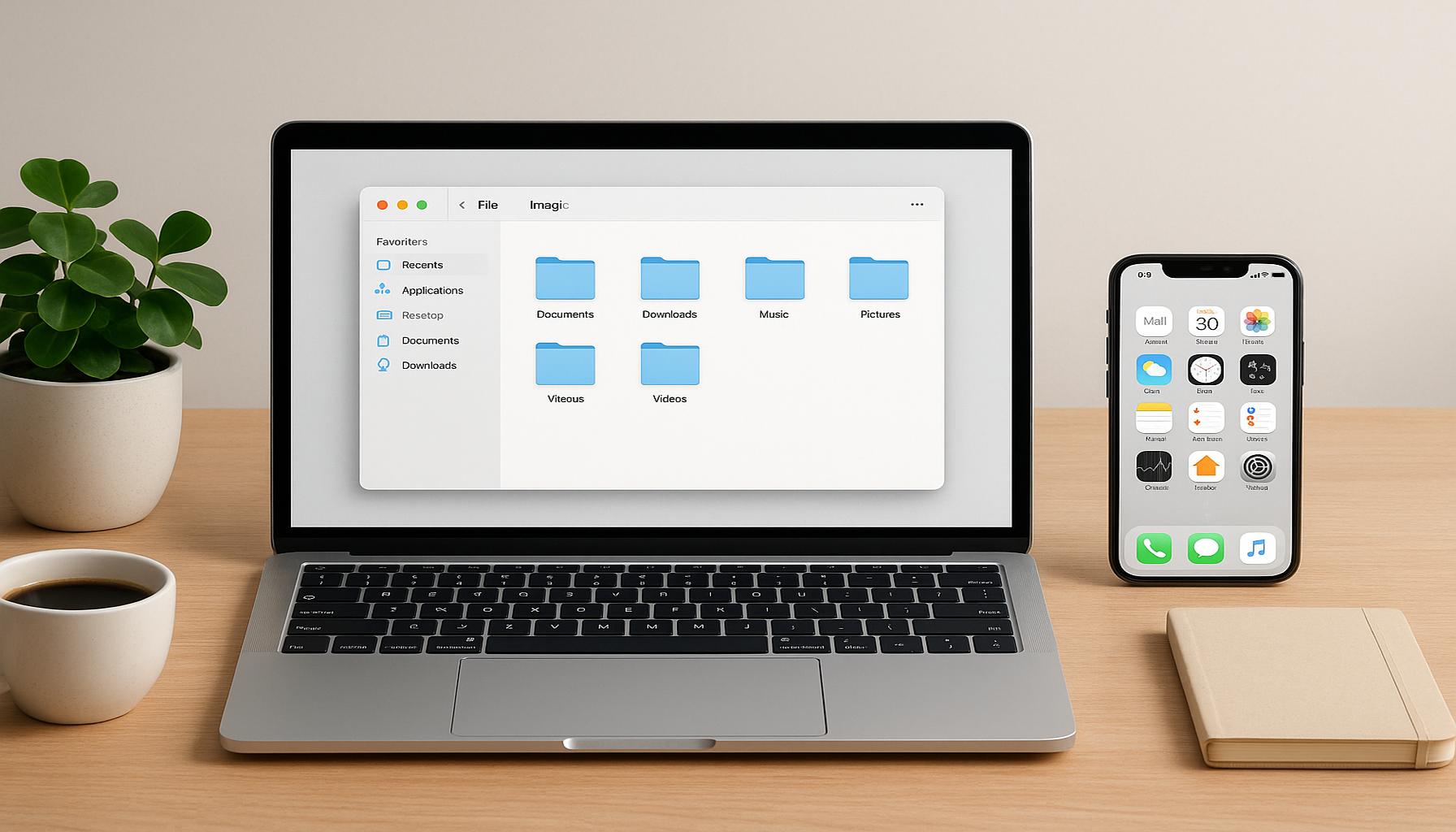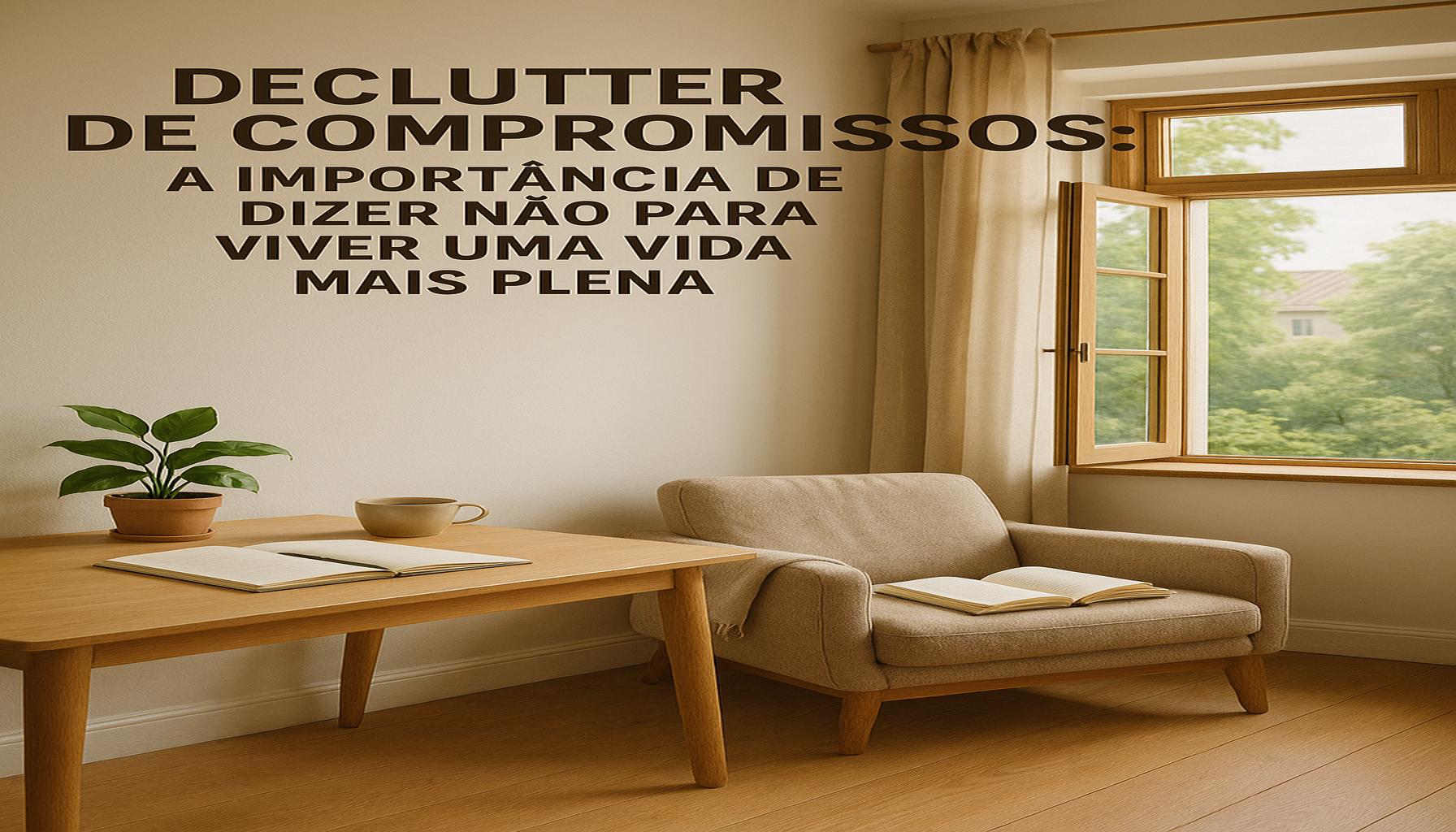Declutter Digital Organize Your Virtual Space for a Minimalist Life

Embrace a Clearer Mindset
In today’s fast-paced digital age, overwhelming amounts of information can clutter not only our physical spaces but also our virtual environments. The principle of Minimalism encourages us to focus on what truly matters, making personal organization essential for attaining a balanced life. As we navigate through endless emails, apps, and files, the need to declutter our digital spaces has never been more relevant.
The Impact of Digital Clutter
A chaotic digital space can lead to heightened stress levels and decreased productivity. By maintaining a well-organized virtual environment, individuals can experience:
- Enhanced focus: Minimizing distractions allows for deeper concentration.
- Improved efficiency: Quick access to necessary files streamlines workflows.
- Better mental clarity: A decluttered space can lead to a more serene mindset.
Preparing for a Transformation
Ready to embark on a journey towards a minimalist digital life? Discover our carefully curated list of the Top 5 tips that will guide you through effective techniques for organizing your online presence. With these strategies, you can free yourself from digital chaos and embrace simplicity.
Top 5 Tips for Decluttering Your Digital Space for a Minimalist Life
In today’s fast-paced digital era, our virtual possessions can sometimes feel as overwhelming as our physical ones. As smartphones, laptops, and clouds brim with files, notifications, and subscriptions, the concept of minimalism becomes increasingly relevant in the virtual sphere. The seduction of the digital world, replete with endless web pages and incessant streams of information, calls for a deliberate strategy to maintain clarity and peace of mind. Here are five essential tips that can help you embrace a minimalist digital lifestyle, leading to a more focused and productive life.
5. Clean Up Your Email Inbox
The email inbox can be likened to a digital filing cabinet with endless drawers that never automatically organize themselves. Enter the concept of inbox zero, a philosophy where you aim to keep your inbox empty or nearly empty. This is not merely about having fewer emails, but about increasing productivity and reducing stress.

Consider this: on average, workers spend about 2.5 hours a day dealing with emails, which translates to over 30% of their workweek. Achieving inbox zero can significantly reduce this time, allowing you to focus on higher-priority tasks and decision-making.
- Unsubscribe from redundant newsletters and spam emails to prevent them from piling up. Even newsletters that you no longer find insightful or entertaining should be let go.
- Use filters smartly. They can automatically sort incoming emails into folders marked as urgent, to read later, or junk. Services like Gmail provide powerful filtering tools right at your fingertips.
- Implement a weekly inbox maintenance routine. Block dedicated time each week to process, sort, and delete emails. This habit introduces a regular cleansing rhythm.
By tackling your inbox with strategic organization, you can realize increased productivity, reduced stress, and a highly efficient digital workspace.
4. Organize Your Digital Files
Much like the tendrils of clutter that can invade our physical spaces, digital files can amass without us even realizing it. The simplicity of a well-organized digital filing system mirrors the peace that a neat and orderly workspace invites.
Consider the average American office worker, who uses about 10,000 sheets of paper annually. Translating this to a digital format means countless files—from documents to spreadsheets—scattered across devices. Organized digital files can free up space and mental energy.
- Create a folder hierarchy tailored to your personal and professional needs. Group files into categories such as work, personal, finances, and more, for seamless retrieval.
- Delete redundant or obsolete files frequently. Make it a point to rid yourself of unnecessary digital weight regularly, fostering a keener focus on what’s current and necessary.
- Leverage cloud storage platforms such as Google Drive or Dropbox, offering both space saving and easy access. They also provide secure backup options.
By managing your digital files with clarity and routine check-ins, you create a seamless path to accessing any document when needed, thereby enhancing efficiency and reducing digital noise.
3. Streamline Your Digital Devices
The concept of streamlining devices is often overlooked in favor of acquiring the latest tech. However, owning fewer but more versatile devices can yield a more coherent digital experience in line with minimalist principles.
Reflect on the multitude of devices accumulated—smartphones, tablets, laptops. Each demands updates, maintenance, and its unique organization, which can dilute focus.
- Combine functionalities where possible; for instance, a smartphone can replace both a phone and a music player.
- Audit and prune unused apps. Not only do they consume storage, but they also invite distractions. Keep only those that serve a regular purpose.
- Maintain software updates and security patches for enhanced efficiency and security.
The value in consolidating your digital devices lies in reduced digital upkeep and increased attention to their optimal use, thus mirroring the efficiency and simplicity of minimalism.
2. Manage Your Digital Subscriptions
The allure of digital subscriptions, with their promise of endless content access, can rapidly become a cluttered and financially taxing digital landscape. An often underestimated strategy is to assess these subscriptions regularly.
The modern individual is estimated to spend over $200 monthly on digital subscriptions, including streaming services, apps, and news sites. However, many subscriptions go unnoticed, charged monthly without full utilization.
- Review subscription lists and ascertain value; if a service provides negligible benefit, it’s time to cancel.
- Promptly handle cancellations, diminishing unnecessary expenses and potential digital clutter.
- Consider consolidating subscriptions; many offer joint services that are both cost-effective and centralized.
A thoughtful approach to managing digital subscriptions can lead to financial savings and reduced digital noise, making way for a simpler, more intentional lifestyle.
1. Embrace Minimalist Online Presence
In the realm of pervasive digital connectivity, our online existence sometimes precedes our offline presence. A minimalistic online persona invites intentional interaction over inundation.
Social platforms have burgeoned into commanding hubs of digital interaction, but they also breed distraction, misinformation, and envy when unchecked. Categorically defining your online presence through minimalism can curtail these negative influences.
- Evaluate and limit engagement to a few platforms that resonate strongly with your personal or professional goals.
- Craft an online persona reflective of your core values, steering away from noise and gimmicks that don’t sync with your authentic self.
- Regularly audit connections and clear out acquaintances or pages that no longer align with your aspirations and can affect your mental peace.
Embracing a minimalistic online presence invites peace and enhances the quality of digital engagements, ensuring they are meaningful and aligned with your personal ethos.
From email inboxes and digital files to devices and social spheres, decluttering your digital space transcends shortcuts or temporary fixes; it’s a lifestyle change. Each tip not only enhances clarity and focus but encourages a harmonious digital existence that supports your minimalist aspirations. The aim is to curate a digital environment that complements, rather than complicates, your life, leading to a clearer mind and focused energy on what truly matters.
| Category | Key Features | Advantages | Disadvantages | Who would benefit |
|---|---|---|---|---|
| Cloud Storage Solutions | Offers remote access to files from any device, often providing a significant amount of free storage. | Promotes efficiency by allowing users to access their data on-the-go and simplifies backups. | Potential privacy concerns and reliance on internet connectivity can restrict accessibility. | Individuals and professionals who need to manage files from multiple locations. |
| Digital Decluttering Tools | Software designed to help users sort, manage, and remove unnecessary digital files. | Facilitates a rapidly organized workspace, enhancing productivity and reducing stress. | May require a learning curve and some tools may not integrate seamlessly. | Tech-savvy individuals looking to improve their digital organization. |
| Email Management Services | Tools or services that automate and categorize email, filtering out spam and prioritizing important messages. | Results in a more manageable inbox, allowing users to focus on critical communications. | Over-reliance may cause users to miss important emails inadvertently categorized as low priority. | Professionals inundated with high volumes of messages. |
| Organization and Productivity Apps | Applications designed to help users plan, list tasks, and prioritize projects efficiently. | Enhances focus by breaking tasks into manageable chunks and improving accountability. | Too many features can complicate usability; not all users may need the extensive functionalities offered. | Individuals striving for enhanced time management and task organization. |
Through a thorough examination of these categories, individuals can harness their full potential by embracing digital decluttering techniques, unlocking newfound efficiency and mental clarity. Each solution holds unique benefits and potential challenges, and understanding these aspects can enrich the journey toward a minimalist digital life.
Frequently Asked Questions about Digital Decluttering
What is digital decluttering, and why is it important?
Digital decluttering refers to the practice of organizing and optimizing your virtual spaces, such as emails, files, and apps, to create a more efficient and less distracting environment. In an era where digital overload can lead to stress and decreased productivity, digital decluttering is crucial. By reducing digital clutter, you can regain control over your virtual life, improve focus, and cultivate a more minimalist, intentional approach to technology use. This process often involves assessing what digital assets are truly necessary and beneficial.
How can I start decluttering my digital life?
To start decluttering your digital life, begin by identifying key areas in need of organization, such as your email inbox, cloud storage, and device applications. Set specific goals, such as clearing your inbox or organizing digital documents. Utilize the delete, archive, and organize strategy: delete what’s unnecessary, archive what you might need later, and neatly organize what’s essential. Regular maintenance, such as weekly reviews of your digital space, can ensure that digital clutter doesn’t return. Prioritizing these tasks helps create a sustainable decluttering routine.
How often should I declutter my digital spaces?
The frequency of digital decluttering largely depends on your digital habits. A monthly review is recommended for most, who gather digital items quickly but feel overwhelmed cleaning too often. If you’re a heavy app user or receive a high volume of emails, you might benefit from a weekly decluttering session. The key is to be consistent, which prevents the buildup of clutter and keeps your digital space manageable. Find a decluttering rhythm that suits your style and digital lifestyle.
What tools can help with digital decluttering?
Various tools can assist in your digital decluttering journey. Email management apps, such as Unroll.Me, help unsubscribe from unwanted newsletters, while cloud storage apps, like Google Drive or Dropbox, offer solutions to organize files. Disk cleanup software can help you quickly identify and remove unused files from your devices. Additionally, tools like Evernote or Notion can organize notes and tasks. Leveraging these tools can enhance your decluttering efforts, making them more efficient and streamlined.
Conclusion: Navigating Minimalism in the Digital Age
The pursuit of a minimalist lifestyle requires one to look not only at their physical environment but also at their virtual space. By understanding the principles of digital decluttering, individuals can create a more streamlined, efficient, and fulfilling digital life. This involves tackling and organizing our emails, managing digital files, taming social media excess, thoughtful app utilization, and maintaining regular digital maintenance practices.
Firstly, the conscious triaging of emails ensures that crucial information is prioritized, while clutter is minimized. It’s about knowing which emails invigorate your drive and which weigh heavily on your time and energy. Secondly, digital file management involves creating an intuitive folder system, regularly deleting unnecessary files, and backing up indispensable data. A well-organized system is essential for quick retrieval of information and reduced digital chaos.
When it comes to social media, curation is key. It is vital to purge unnecessary subscriptions and unfollow accounts that no longer resonate. This fosters a more positive and engaged experience online. Thoughtful app management also places focus on functionality over abundance. Retaining only those applications that truly add value to our digital interactions can profoundly enhance productivity.
Finally, consistent maintenance of your digital environment ensures that clutter remains at bay. It is an ongoing commitment that continually rewards with clarity and tranquility. As we strive towards adopting minimalism, embracing these digital organization strategies can be transformative.
In an era where digital interactions are inescapable, making deliberate choices about what occupies our virtual space is crucial. By doing so, we uphold the true essence of minimalism: finding freedom in simplicity and ultimately creating more room for what genuinely matters in life. In embracing these practices, a more intentional and empowered digital experience is well within reach.


